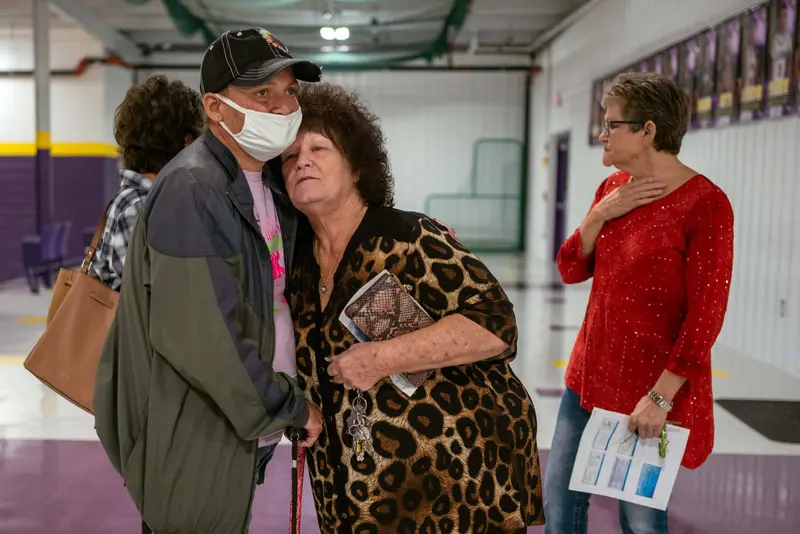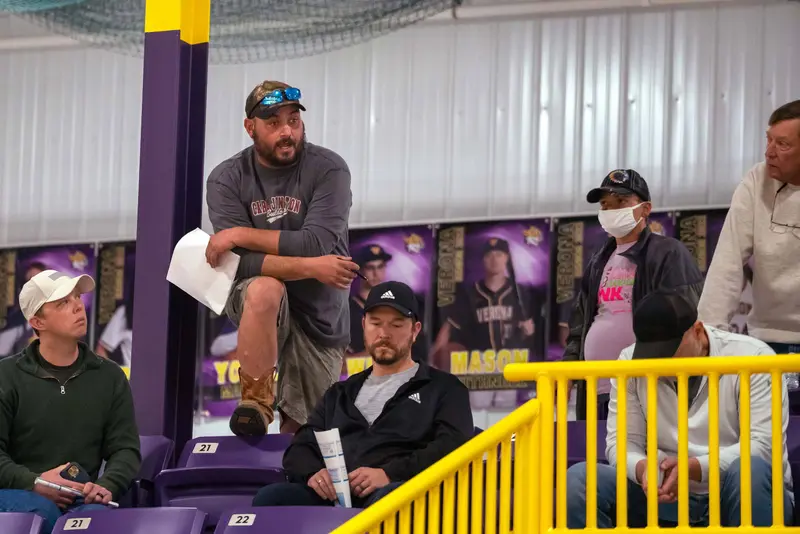Two communities saw major impacts this month stemming from a first-of-its-kind ProPublica endeavor to map toxic industrial air pollution.
The Environmental Protection Agency will start monitoring the air in Verona, Missouri, where a manufacturing plant named BCP Ingredients emits a potent carcinogen called ethylene oxide. The mayor of Verona, Joseph Heck, has fought for air monitoring for nearly a year, since ProPublica’s analysis showed the company’s emissions substantially raised the local cancer risk. In some parts of the small city, the industrial cancer risk was an estimated 27 times what the EPA considers acceptable.
It feels “amazing” to finally see progress, Heck said in an interview. The EPA will install three air monitors in Verona to track ethylene oxide. The agency will also operate a mobile monitoring vehicle that can take additional samples.
Heck said the attention from ProPublica and local TV station KY3, which reported on ProPublica’s findings, helped spur these developments. Those stories have “prompted a lot of things. ... When a company or even EPA gets in the public eye, then they’ve got to look like they’re doing something about it. I couldn’t have done this on my own. There ain’t no way.”
In a statement, the EPA said the monitoring is expected to begin this fall.
BCP Ingredients did not immediately respond to a request for comment.
During a surprise inspection in June, the EPA found multiple health and safety violations at the plant. The agency recently issued an administrative order for compliance on consent, which requires the company to update its emergency procedures and take other steps to fix the violations. The order does not include a fine; in a statement, the EPA said it “has reserved the right to seek penalties in a future action.”
Heck said the monitoring alone will not solve everything. He worries about the health effects of living near ethylene oxide and how the EPA might react if the monitoring shows high concentrations. His partner, Crystal Payne, was a breast cancer survivor and in remission when they moved to Verona eight years ago. Within a year, her cancer came back and spread to her brain and her liver. Payne died this month.
“She’s in a better place,” Heck said. “No more tests, no more suffering.”

Also this month, residents of St. James, a Louisiana parish on a stretch of the Mississippi River known as “Cancer Alley,” won a yearslong battle to block the building of a $9.4 billion petrochemical complex that would have been one of the largest industrial projects in state history. As reported by Lylla Younes for Grist, a state district judge withdrew the air permits, finding that state officials did not adhere to the Clean Air Act when issuing them.
“The Louisiana Department of Environmental Quality’s decision to authorize these potential public health violations, without offering evidence to show it had avoided the risk to the maximum extent possible, was arbitrary and capricious and against the preponderance of evidence under the agency’s public trust duty,” Judge Trudy M. White wrote in her ruling.
ProPublica found in 2019 that the air around the complex proposed by Formosa, a Taiwanese chemical giant, already contained more cancer-causing pollution than 99.6% of industrialized areas in the country. The proposed facility could have caused toxic air levels in some parts of St. James to triple.
“Formosa was wrong to even want to come in here and poison us because we’re already being poisoned,” Sharon Lavigne, a lifelong parish resident, told Grist’s Younes, who previously led ProPublica’s investigation. After Formosa announced its plans for the complex, Lavigne founded the grassroots group Rise St. James, which teamed up with the environmental watchdog Earthjustice to sue the state over its decision to grant the permits.
The Louisiana Department of Environmental Quality plans to appeal the judge’s decision. An agency spokesperson said they had “no other comment on this active litigation.”
Formosa did not respond to ProPublica’s request for comment. Janile Parks, the spokesperson for the Formosa unit in charge of the project, told Reuters it disagrees with the court opinion. “We believe the permits issued (by the state) are sound and the agency properly performed its duty to protect the environment in the issuance of those air permits,” she said in a statement, adding that it intends to “construct and operate it to meet all state and federal standards.”
Update, Sept. 29, 2022: This article was updated with a comment from the Louisiana Department of Environmental Quality.










